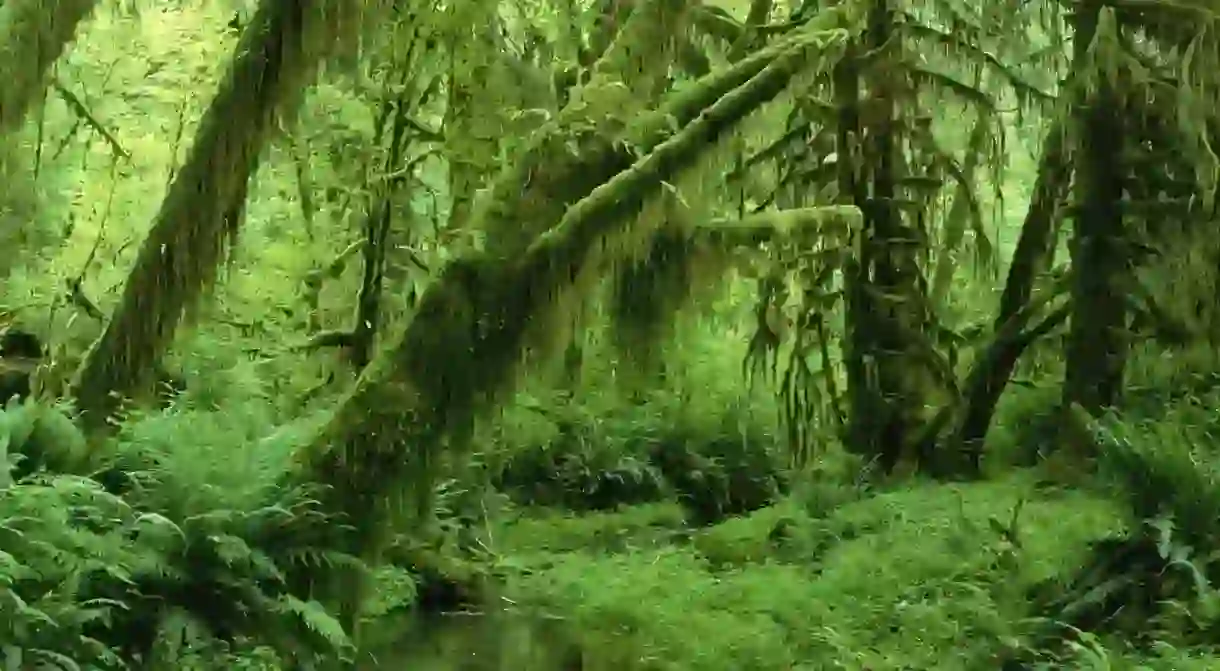Inside Washington's Eerie Hall of Mosses

The Olympic Peninsula offers an array of outdoor activities, one of the more unique features being the Hoh Rainforest.
The Hoh Rainforest sits on the western-most edge of the Olympic National Park, just off of highway 101 and about forty minutes southwest from Forks. It’s one of the largest temperate rainforests in the United States and is home to large populations of Sitka and western hemlock spruce trees. Though open year-round, the forest experiences around 127 mm of rainfall per year, with January being its wettest month. It’s this kind of rainfall, humidity, and location that create the forests most unique hiking trail, the eerily dense Hall of Mosses.
The trail itself is easily accessible, especially for those camping at the Hoh Campground. Less than a mile long and at an elevation gain of only 100 feet, the Hall of Mosses is a quick and easy stroll for visitors. Like all of Washington’s national parks, the Olympic National Park keeps the trail well maintained, meaning that despite the definite puddles and mud, the gravel trail is sure to make the jaunt enjoyable. More importantly, the gravel trail keeps walkers from damaging the thick growth.
Brown and green moss blanket the old trees in the Hall of Mosses. It’s not just home to Sitka spruce trees either, but also giant maples. The fast-growing moss doesn’t damage the trees like one might assume; instead, it’s the nutrient-rich soil. The wet soil causes the trees to grow short roots and therefore, they have a lack of stability. But it’s the sagging, mossy characteristics that give the trail its name. Altogether, the trees look like one dark hallway drenched in a creepy coating. Walking through the Hall of Mosses is like traveling to Yoda’s home on Dagobah, trekking through the dangerous Fire Swamp in The Princess Bride, or for a more animated audience, like entering the imaginative world of Dr. Suess.
No matter the season, both the Hoh Rainforest and the Hall of Mosses is beautiful any time of year, though for those seeking some serenity and little less foot traffic, Winter is the trail’s quietest season.













